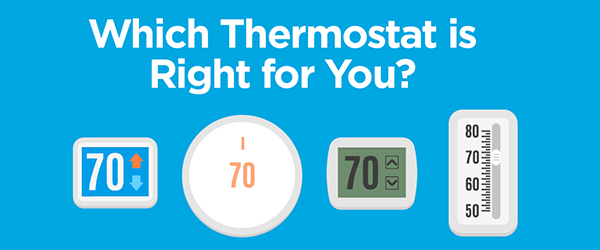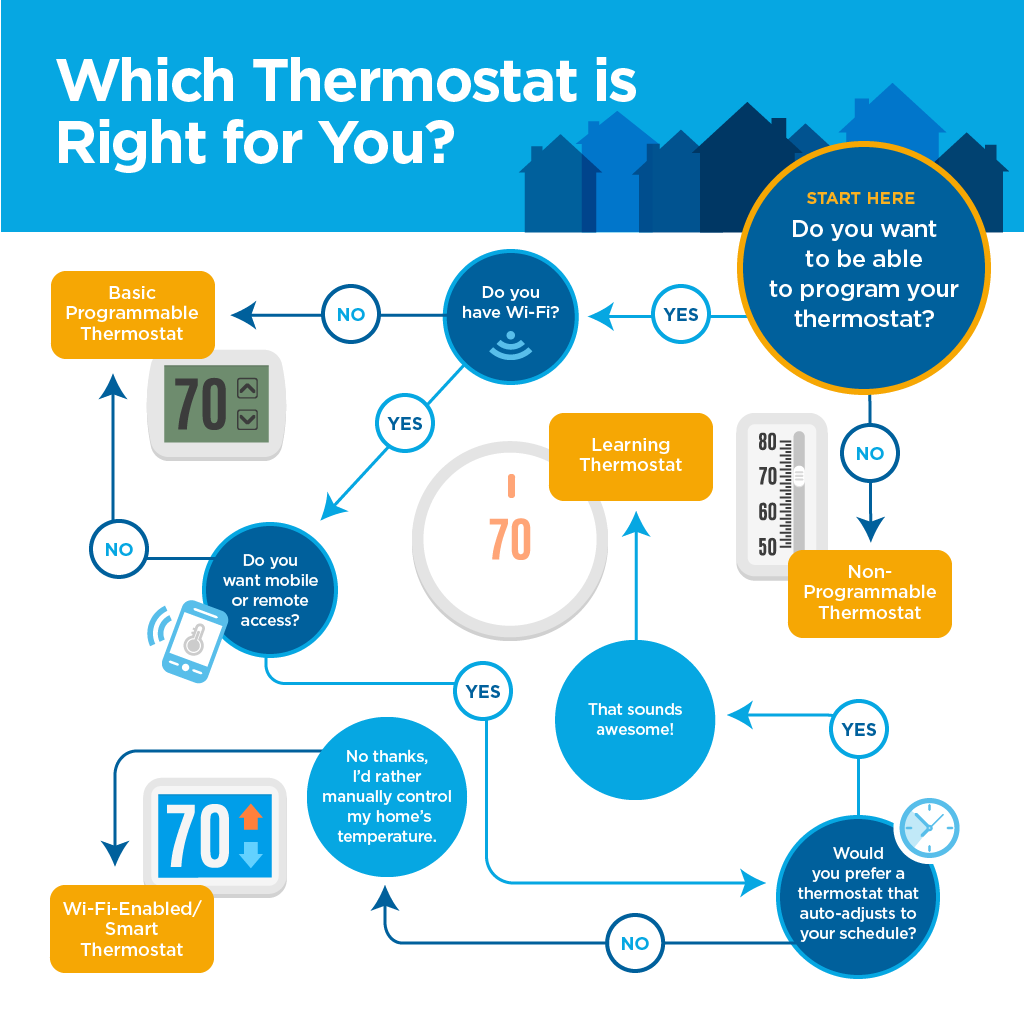Which Thermostat is best for your family?

Increasing the efficiency of heating and cooling your home using targeted temperature control can help you reduce the wear and tear on your HVAC units, being that they won’t have to work as hard to keep you comfortable. A more efficient climate control program for your home also reduces the amount of energy you’re using throughout the year, increasing your savings.
Thermostat Control + efficiency = Savings
Increasing the efficiency of your home’s overall heating and cooling through targeted temperature control allows you to reduce the wear and tear on the systems and units themselves since they won’t have to work as hard to keep you comfortable. A more efficient climate control program for your home reduces the amount of energy you’re using throughout the year, increasing your savings.Types of Thermostats Simplified
Thermostats can be broken down into 4 main categories, listed from most basic to most technologically advanced:- Non-Programmable Thermostats
- Basic Programmable Thermostats
- Wifi-Enabled/Smart Thermostats
- Learning Thermostats
1. Non-Programmable Thermostat
You want to keep it basic and don't need all the bells and whistles. A Non-Programmable Thermostat may be the choice for you.- Manual temperature control
- Inexpensive hardware
2. Basic Programmable Thermostat
If your schedule is routine, you don’t require remote access, and you’re looking for relatively inexpensive hardware, the Basic Programmable Thermostat might be for you. Each model has different features, but there are typically only three types of programming available.- Three types of programming models:
- 5-1-1 models let you set a temperature for the 5 days of the week, 1 for Saturday, and 1 for Sunday.
- 5-2 models allow you to set a temperature for the 5 days of the week but only 1 temperature for both weekend days.
- 7-day models offer the most flexibility, allowing you to set a different temperature for each day of the week.
- Inexpensive hardware
- No remote control features
3. WiFi-enabled/Smart Thermostat
Do you find yourself managing a rather unpredictable schedule? The WiFi-enabled/Smart Programmable Thermostat might be for you. These thermostats boast all the features of the Basic models, but have an added element of remote control. They hook up to a wireless Internet connection and can connect to mobile applications. Using your smartphone, you can adjust the temperature on your thermostat without actually being at home. Many still have programmable elements, but allow for remote adjustment.- Connects to internet or mobile application for remote control
- No learning functionality
- Mid to High range hardware costs
4. Learning Thermostat
The Learning Thermostat takes temperature control to a whole other level. One of the first devices to hit the market, the Nest Learning thermostat, can help you manage your home’s temperature without you telling it what to do. This “smart” device’s algorithms and circuitry allow it to “learn” how you and your home operate. Through its complex computing, the Nest can actually anticipate and adjust your home’s climate for you. It can sense if someone is home, what the air’s humidity is, what’s happening outside, or even if someone has fired up the oven, and adjust itself accordingly. These learning features let the thermostat auto-program itself based on your habits.- Connects to internet or mobile application for remote control
- Learns your behavior and adjusts itself automatically
- Highest hardware costs
Decision Tree: Types of Thermostats
Are you still wondering which thermostat is right for your home? Answer a few simple questions as you walk through our thermostat decision tree below so you can choose a thermostat with confidence.
Learn more about other smart appliances for your home